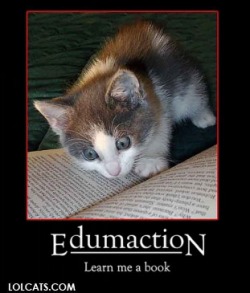Conclusion

As important slang is to youth culture, and as fast as the English language is evolving, it is important that English teachers respect student use of slang and teach students strategies for deciphering unfamiliar text. It is particularly important to teach students these reading strategies to apply other genres, whether news, advertising, pop culture, or academic art, prevalent in the world around them, and fields they will likely face unfamiliar words. This is especially important in secondary teaching where students have already learned to read, and have made the transition to reading to learn. Reading is the gateway to obtaining knowledge in every field and every field has a specific vocabulary that is perhaps unfamiliar to an individual. Therefore, it is important for teachers to help students grasp unfamiliar words, helping them to comprehend, analyze, and communicate with the world.
These skills can also bridge into other fields of decoding meaning, such as visual images with shorter, snappier texts. Learning how to grapple with unfamiliar words prepares students with strategies that allow them to both grapple with unfamiliar mediums ubiquitous in every day life. By accumulating these skills, students move towards accomplishing media literacy, which allows them to better understand and analyze the world around them. They then can create meaning for themselves, and contribute it the universal project of progress, communicating their message to the world. Therefore, as the following strand will investigate, visual images present in everyday life and on the Internet are valuable tools both to motivate pop culture-crazy adolescent students and to teach valuable literacy skills.
These skills can also bridge into other fields of decoding meaning, such as visual images with shorter, snappier texts. Learning how to grapple with unfamiliar words prepares students with strategies that allow them to both grapple with unfamiliar mediums ubiquitous in every day life. By accumulating these skills, students move towards accomplishing media literacy, which allows them to better understand and analyze the world around them. They then can create meaning for themselves, and contribute it the universal project of progress, communicating their message to the world. Therefore, as the following strand will investigate, visual images present in everyday life and on the Internet are valuable tools both to motivate pop culture-crazy adolescent students and to teach valuable literacy skills.
